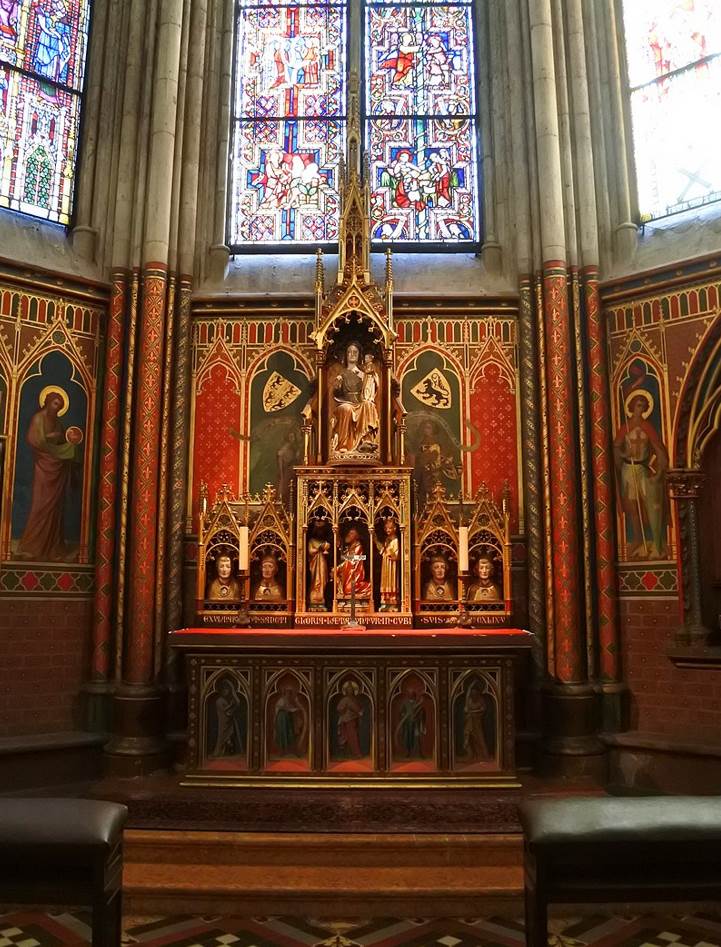Three distinguished guests from abroad visited Baby Jesus Christ shortly after his birth. They brought lavish gifts for the Son of God, including gold, frankincense, and myrrh.
That’s the story according to the Gospel of Matthew, the only of the gospels to mention them. It has been widely adopted in Christianity and is a famous Christmas legend.
During the Middle Ages, one of the most stunning examples of Romanesque art was constructed to hold the so-called “Relics of the Magi.”
In this article, you’ll discover some of the most interesting facts about the Shrine of the Three Kings by Nicholas of Verdun, an incredible work of Mosan art.
1. It’s located in one of the most famous churches in the world
The Shrine of the Three Kings is also known as the “Tomb of the Three Kings” or the “Tomb of the Three Magi.”
That’s a reference to the three wise men who visited Jesus Christ by following the so-called “Star of Bethlehem,” another popular legend within the story.
The Shrine is a large gilded monument that is placed above the high altar of Cologne Cathedral, the most amazing building in the city.
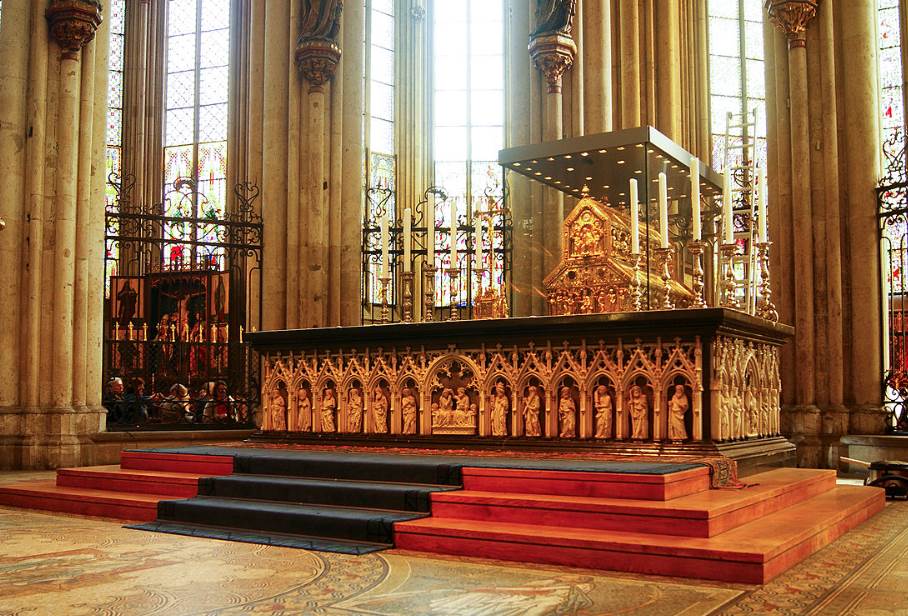
2. It presumably holds the bones of the Three Kings who visited Jesus Christ
The shrine is also known as the Tomb of the Three Kings and that’s because it presumably holds the remains of the Three Kings.
They are only mentioned in the Gospel of Matthew of the New Testament and although they aren’t named, the traditional names of the three men are Melchior, Caspar, and Balthazar.
The relics of the Magi have an extensive history that goes back to their storage in Constantinople, the capital of the Roman Empire during the reign of Constantine the Great.
It was the Roman Emperor who “donated” the relics to Eustorgius I, the Bishop of Milan at the time. They were transported to the city in northern Italy by oxcart.
Fast forwarding about 8 centuries later, the relics moved once again to Cologne on the orders of Holy Roman Emperor Frederick Barbarossa.
He moved them from a church in Milan called the church of Saint Eustorgio to Cologne in 1164 where they are kept today inside the Shrine of the Three Kings.
So are the remains of the Three King really inside?
The shrine was opened in 1864 and it contained bones wrapped in white silk that belonged to three different people, garments, and coins belonging to the 12th-century Archbishop of Cologne.
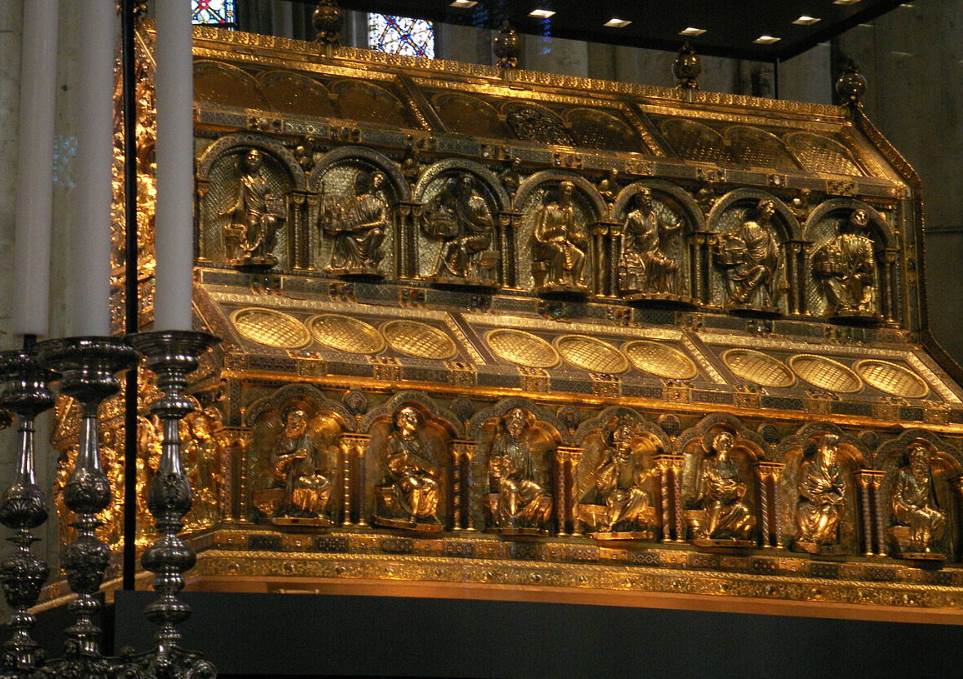
3. It was designed by a renowned medieval goldsmith but he didn’t complete it
The shrine is considered to be one of the greatest works of art produced during the Romanesque era. It was started by Nicholas of Verdun, a renowned Romanesque artist.
The name of the artist is a reference to his place of birth, Verdun, Upper Lorraine, in northeast France. He spent most of his artistic career in the valley of the Meuse, the center of Mosan art.
He was a revolutionary artist who produced some artworks that can be described as “Proto-Renaissance.” The Shrine of the Three Kings and the Verdun Altar at the Klosterneuburg Monastery in Austria are great examples of this.
He started this work in 1180 but because he died in 1205, he didn’t manage to complete it. The work was finished by unknown members of his workshop in 1225.
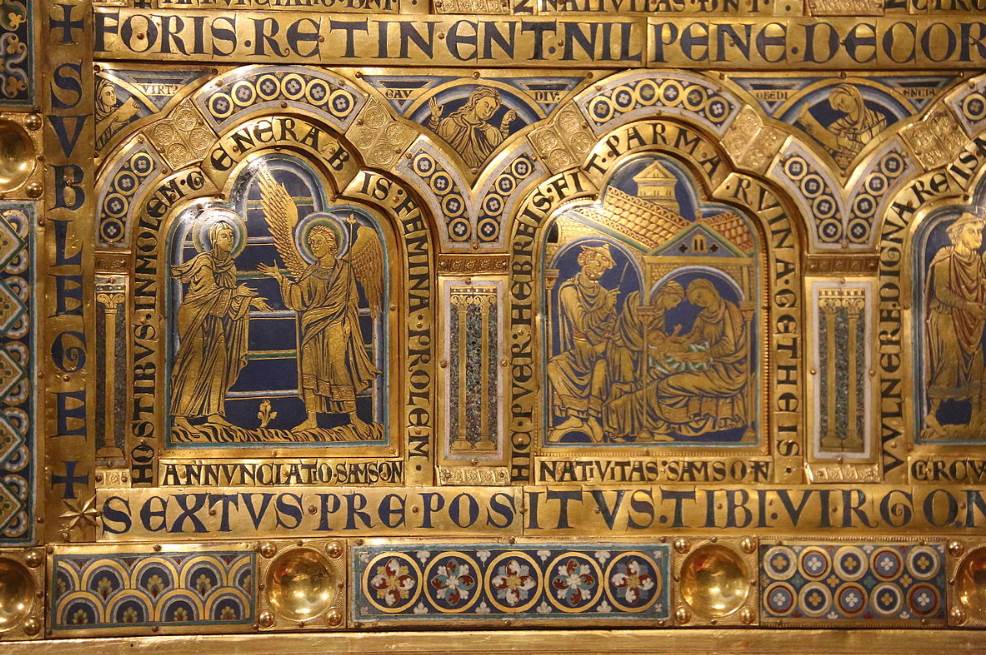
4. The shrine was designed as a triple sarcophagus and shaped as a basilica
There were three kings so Nicholas of Verdun probably figured that he had to integrate this notion into his masterpiece.
That’s why he designed the shrine as three sarcophagi that are stacked on top of each other to form the shape of a basilica.
Although it’s impossible to see, the core structure of this work is made of wood. The artist then covered it with gold and silver.
He also integrated filigree and enamel and over 1,000 jewels and beads were used to decorate this incredible work of art.
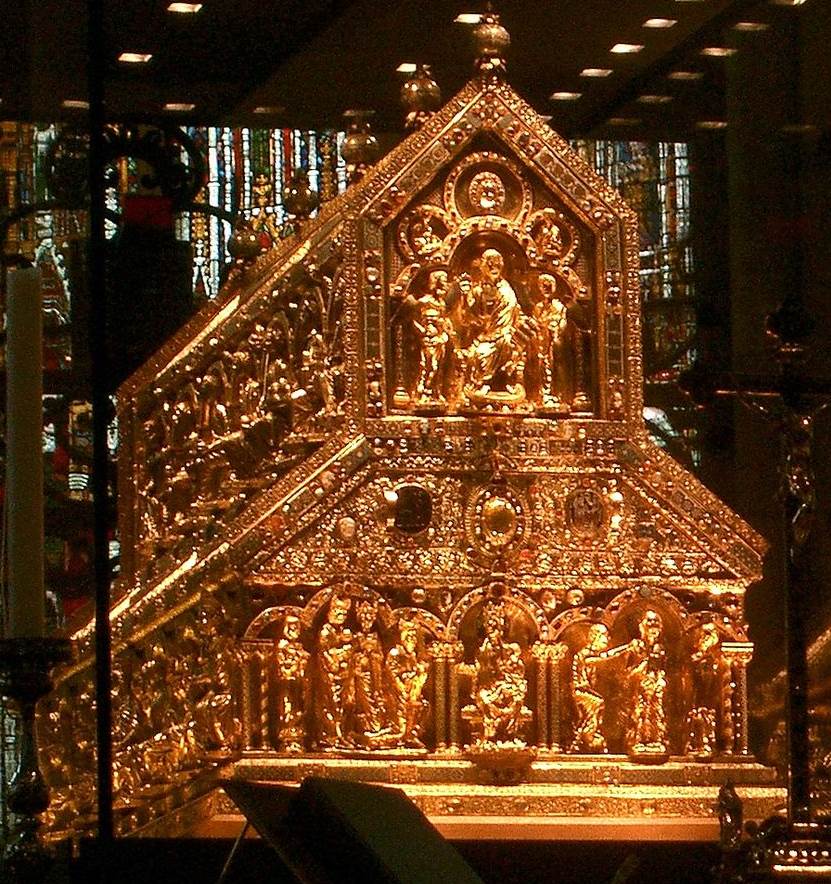
5. It features 74 major reliefs depicting a large number of important Christian figures
There’s a reason why it took about 45 years before the Shrine of the Three Kings was completed. The level of detail that this master goldsmith integrated into the work is simply phenomenal.
The shrine features a total of 74 different silver-gilt figures that represent the Apostles, Saints, Prophets, and various other important figures in Christianity.
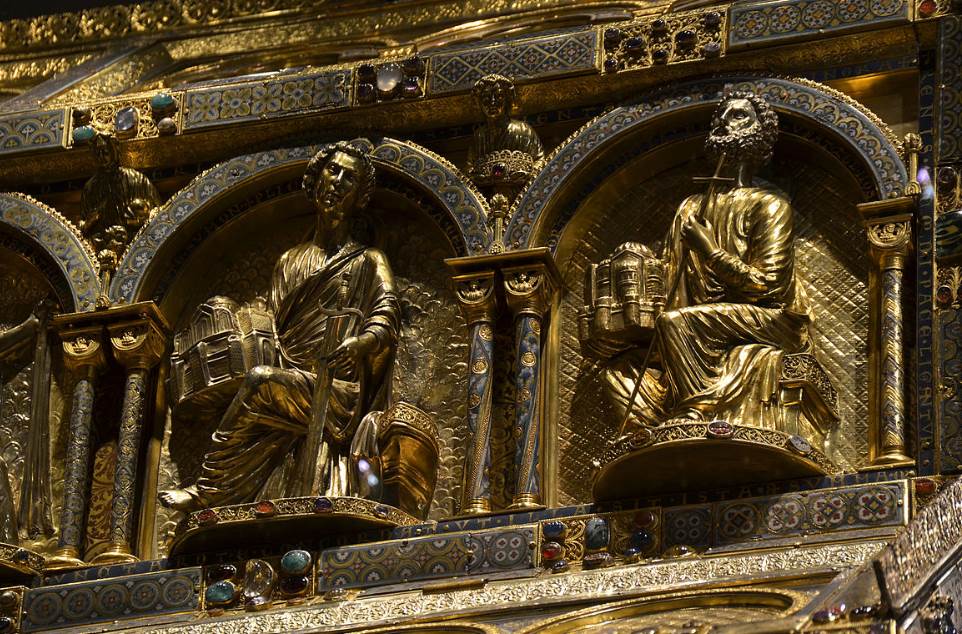
The 74 main figures are adjoined by a large number of figures located in the background and many sections depict scenes from the life of Jesus and the Passion.
Another remarkable figure present in the shrine is Rainald of Dassel (1120-1167), the Bishop of Cologne when the shrine arrived in the city.
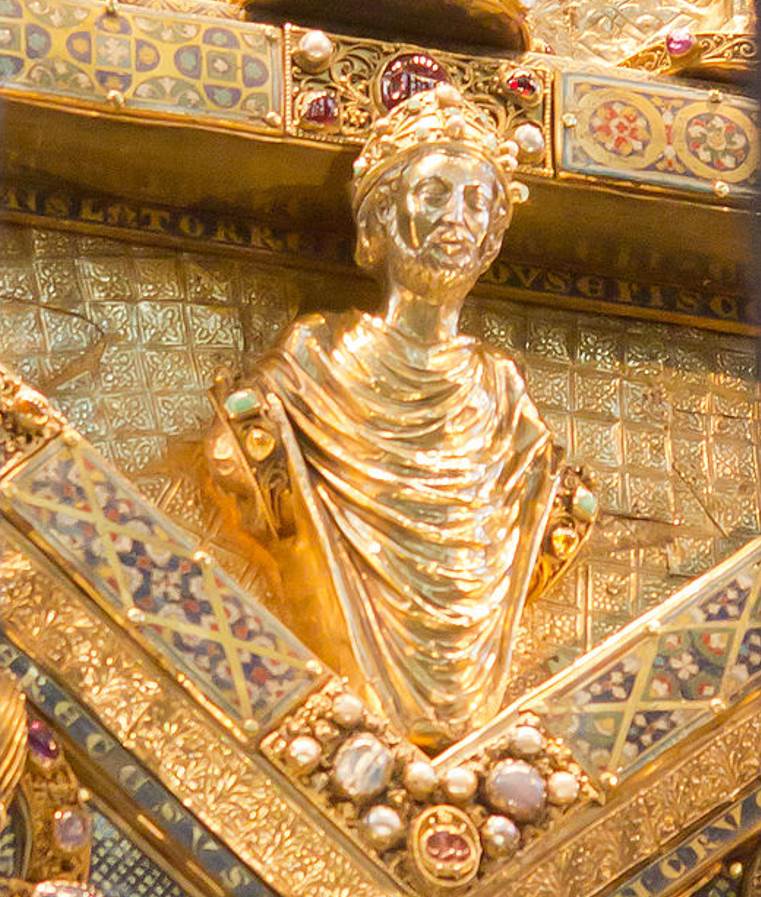
6. The shrine played an important part in the history of Cologne
The Shrine of the Three Kings has been one of the most important tourist attractions in Cologne since it arrived in the city.
Thousands of pilgrims flocked to the city in Western Germany every year to see the Relics of the Magi. This number only increased when the amazing shrine was completed.
King Otto IV (1175-1218), the Holy Roman Emperor between 1209 and 1218 donated three gold crows to the city in 1199. These have since been included in the flag of the city.
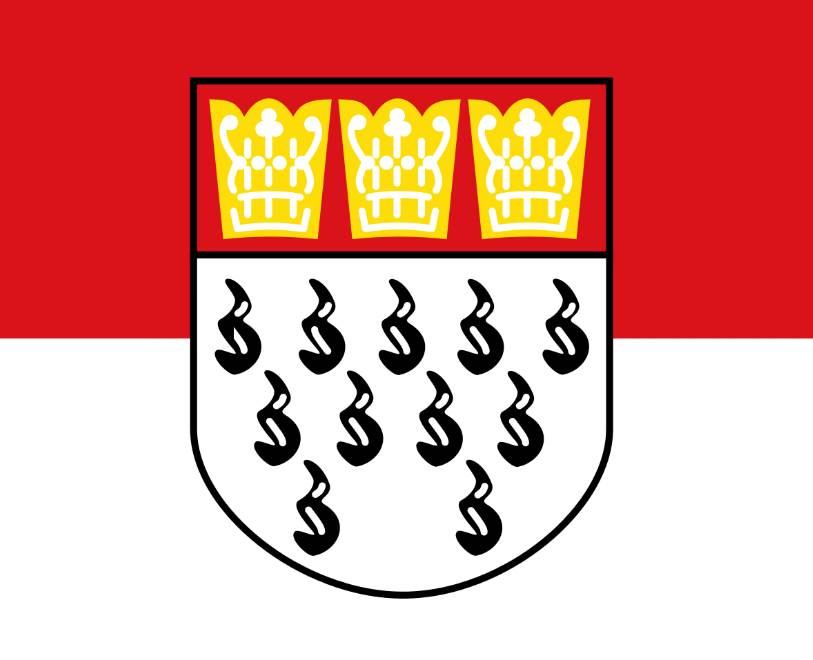
Even more important is the fact that the first stone of Cologne Cathedral, the magnificent Gothic Cathedral in the city, was laid in 1248 especially to hold the shrine.
This church wasn’t completed until 1880 which was 632 after the construction had started. It’s one of the main attractions of the city as millions of people visit this stunning church every year.
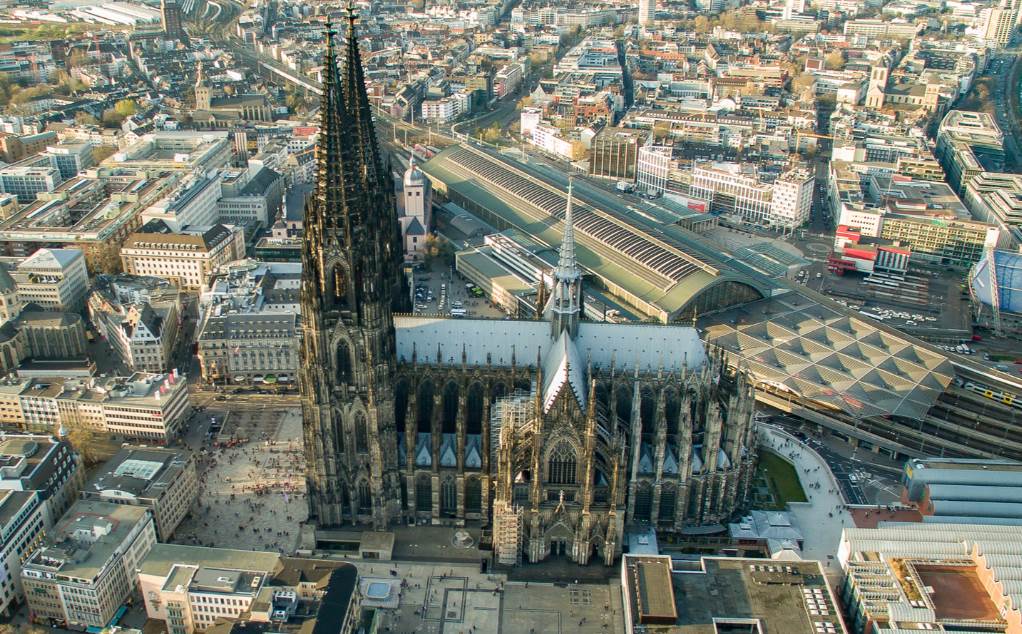
7. How big is the Shrine of the Three Kings by Nicholas Verdun?
The shrine was designed as a triple sarcophagus and it’s not much bigger than the average final resting place of this kind. It has the following dimensions:
- Width: 110 centimeters (43 inches)
- Length: 220 centimeters (87 inches)
- Height: 153 centimeters (60 inches)
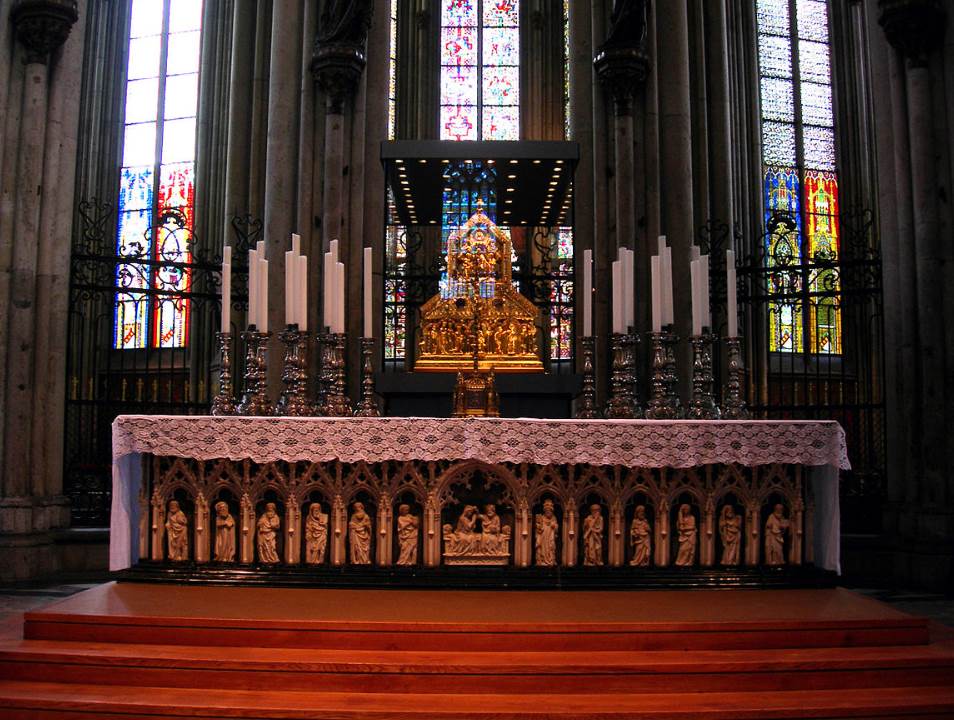
8. The shrine was moved to another location after more than 6 centuries
Although the shrine is located above the high altar of Cologne Cathedral today, this hasn’t always been the case.
Between 1322 and 1948, the shrine was located in a specially designed chapel referred to as the “Chapel of the Magi.” It was moved to its current location in the late 1940s.
